Radeon HD 6900 Series Upgrades
The high-end "Cayman" architecture used by the Radeon HD 6900 series is a little different to that of the Barts, which debuted with the Radeon HD 6870 and HD 6850 graphics cards.
The Barts variant used the same VLIW5 configuration as the Radeon HD 5000 series, which features SIMD units with 4 simple and 1 complex stream processing unit.
The Radeon HD 6900 series on the other hand adopts a VLIW4 configuration, which features stream processing units arranged in groups of four along with general purpose registers. Although the four have equal capabilities, two out of four of these (occupying 3 and 4 issue slots) are assigned with some special functions. AMD claims that VLIW4 configuration gives similar computational power as VLIW5, with 10% reduction in die area.
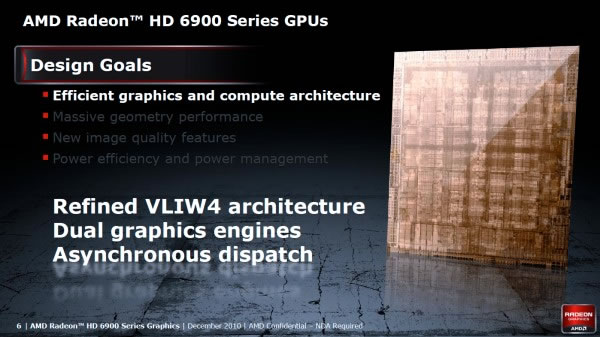
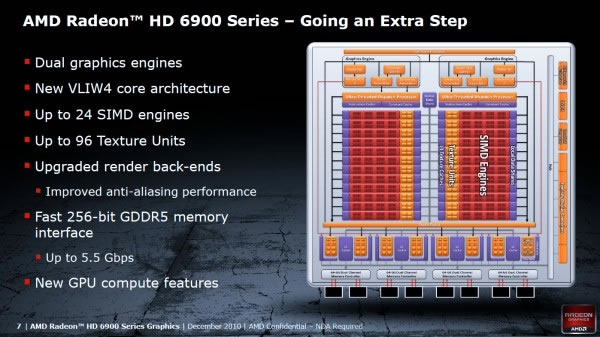
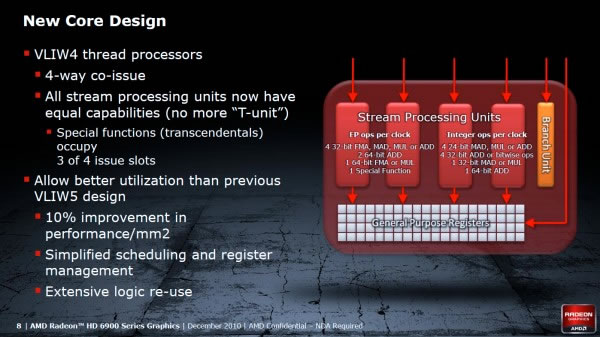
The Cayman GPUs feature a greater level of parallelization when compared to the Evergreen/Cypress architecture used by the Radeon HD 5800 series. The Barts GPUs sit somewhere in the middle, as they were a step up from Cypress in assigning individual dispatch processors for each of the two SIMD Engine blocks.
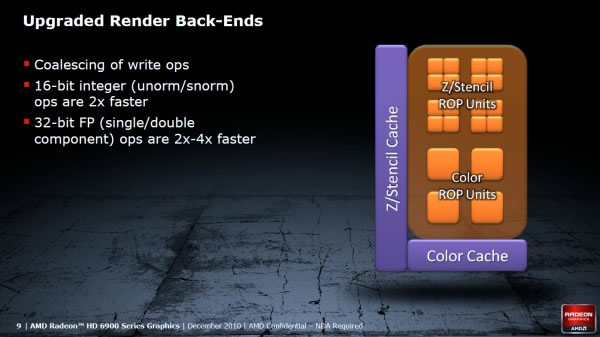
The Cayman GPUs take things a step further with dual GPEs (Graphics Processing Engines) and assigning each to an SIMD engine block. What this means is that the Cayman architecture* now features two physical tessellation units whereas Barts only featured a single tessellation unit with improved efficiency when compared to the Radeon HD 5800 series as claimed by AMD.
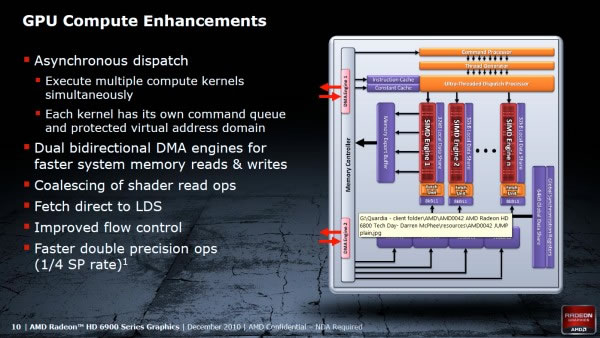
What this means for the Radeon HD 6900 series is that tessellation performance can be improved quite significantly. In fact, AMD is claiming up to 3x the performance of the Radeon HD 5870 in these scenarios, which as you might remember were the ones Nvidia liked to point out when claiming Fermi was architecturally superior than previous-generation Radeons.
In addition, the Cayman architecture also features reworked render backends consisting of 128 Z/Stencil ROPs, and 32 color ROPs, with up to 2x faster 16-bit integer operations and 2-4x faster 32-bit floating point operations.
Note: For sake of simplicity we have referred to Cayman and Barts code-names that identify the high-end and mid-range desktop products in the AMD's latest 6000-series GPU family (code-named as a whole "Northern Islands").